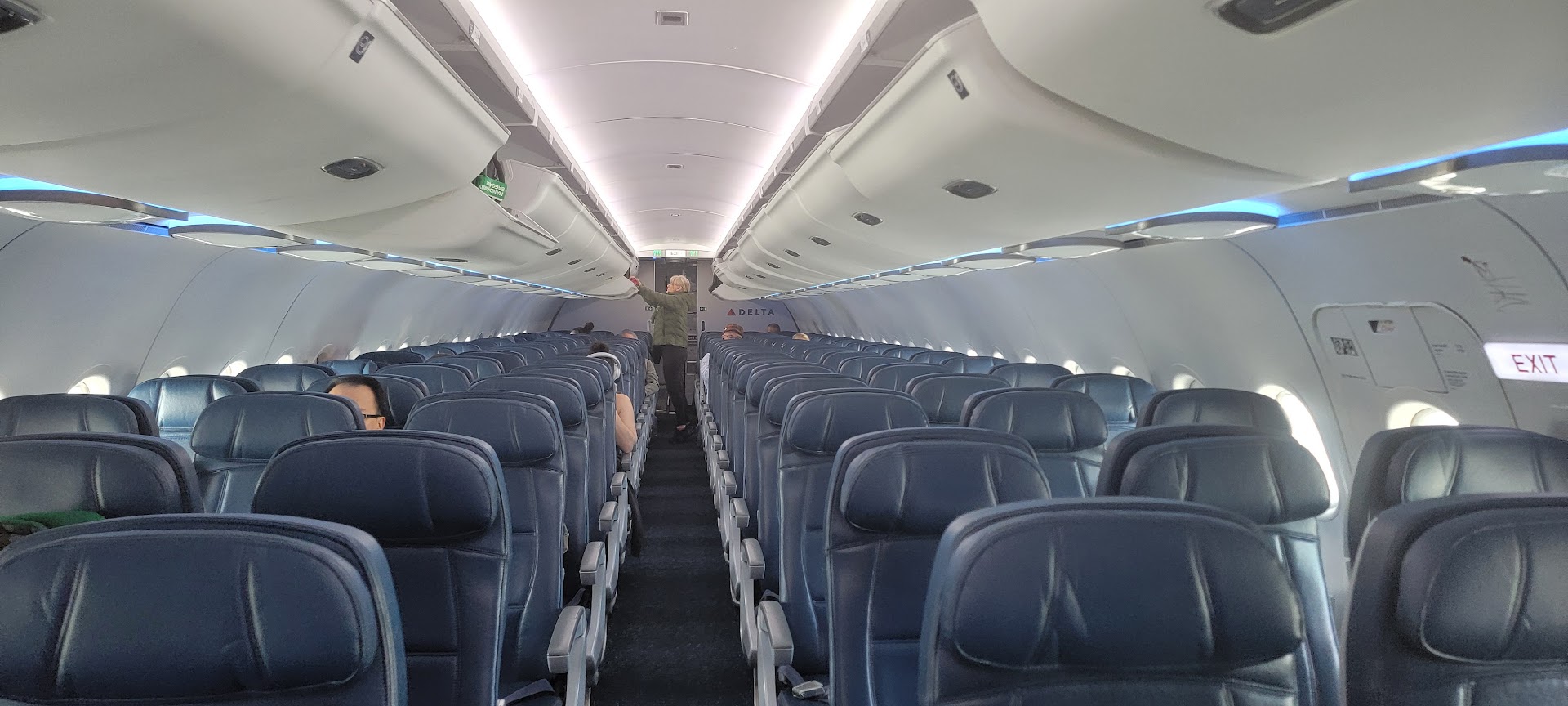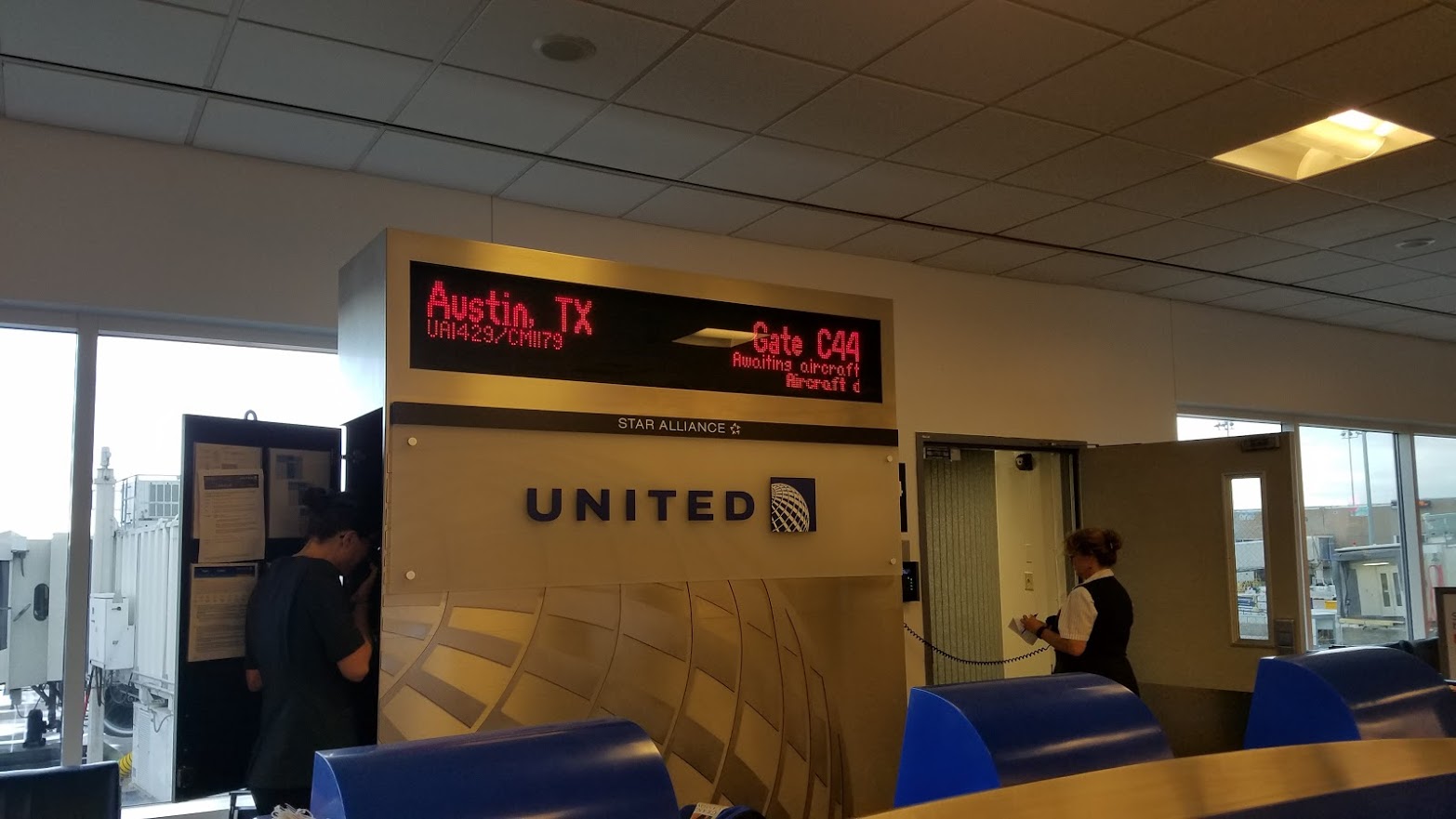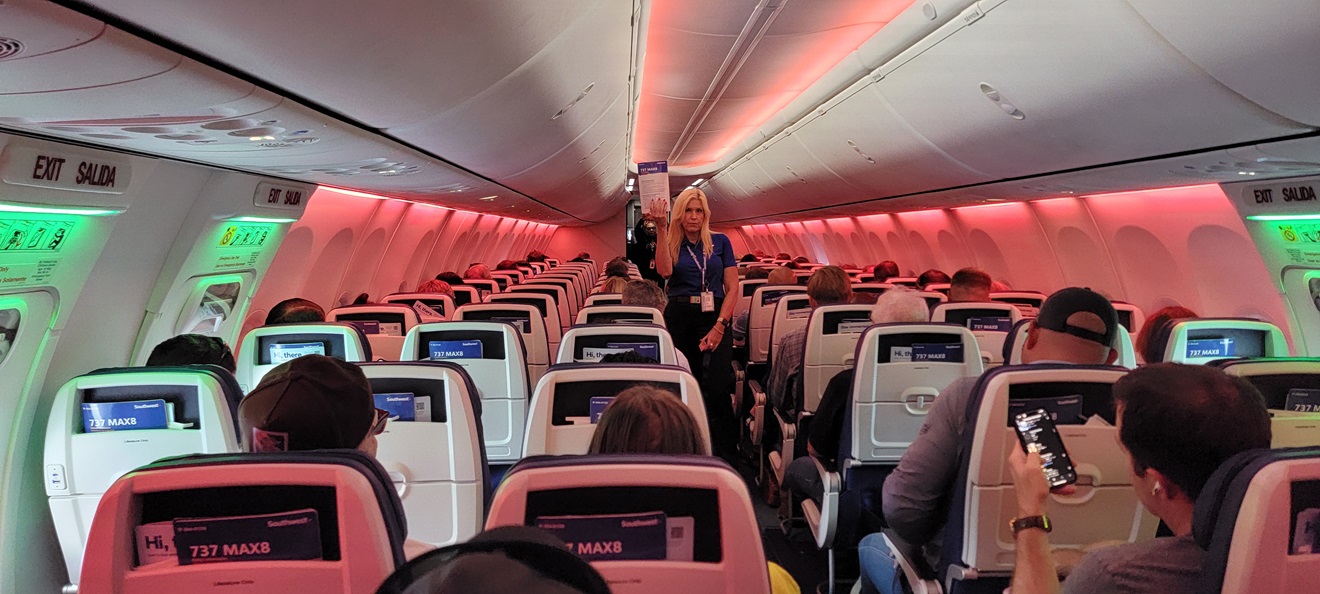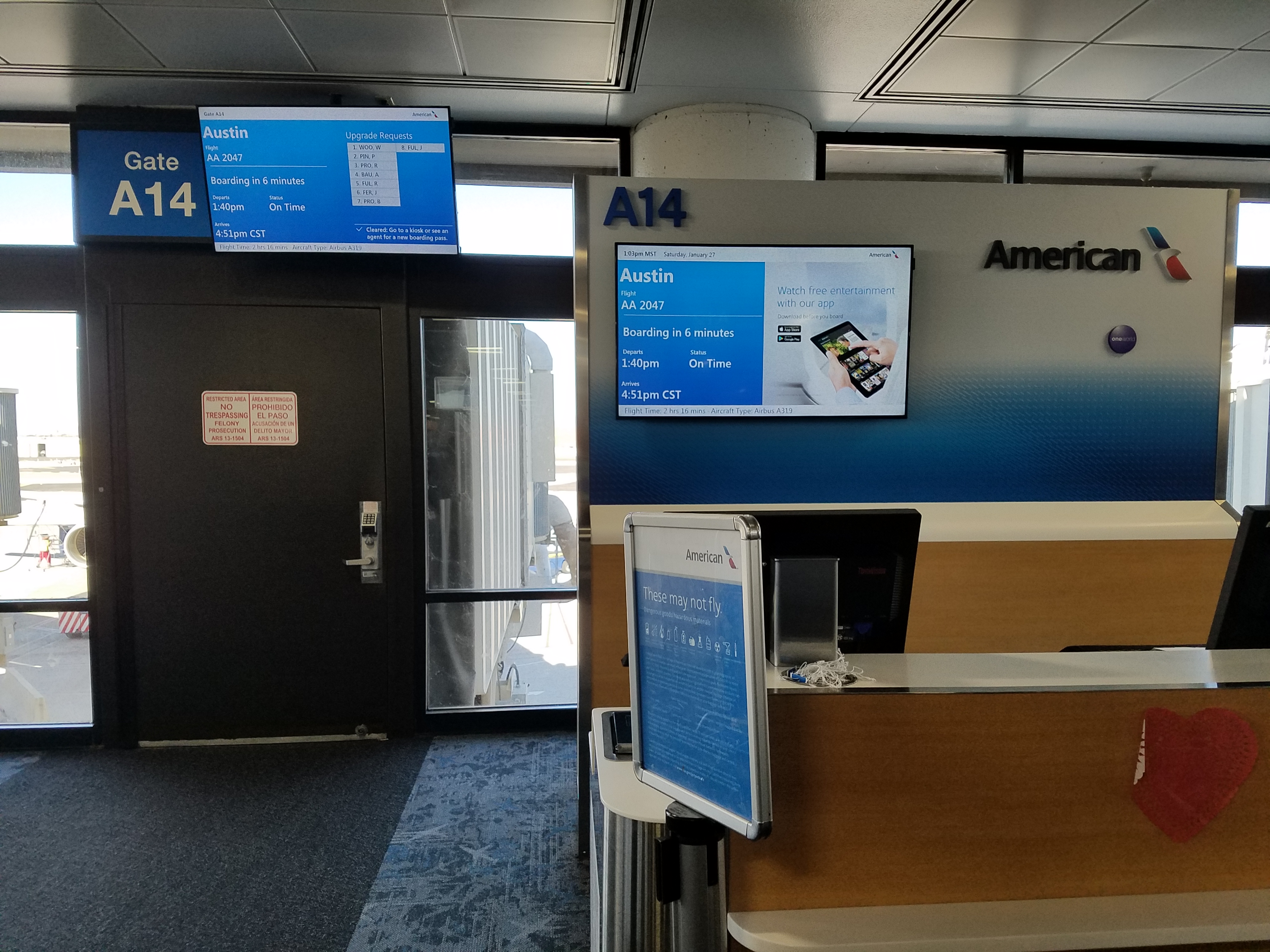The largest U.S. airlines have 8 to 10 boarding groups. In theory, airlines want passengers on planes faster, and the groups do have elements geared towards that – the later boarding groups may prioritize passengers towards the back of the plane or in window seats. But that’s only a small piece of what airlines are after.
One study found that if airlines really wanted to board people quickly they would send:
passengers in a series of waves, with the first passengers called to board seated in window seats two rows apart—first 30A, then 28A, then 26A and so on. Next, the same for the other side of the plane (30F, 28F, 26F).
The process continues with odd row window seats on either side, middle seats, and finally aisle seats. Each person can sit down within moments of one another without getting in anyone’s way.
In field tests, it proved to be almost twice as fast as most conventional methods, and 20% to 30% faster than have-at-it, entirely random boarding—which is also faster than the method used by airlines. (He too would board slower passengers requiring assistance first.)
Yet airlines don’t do this! They have competing interests involved, what works in the simulation doesn’t always work well in practice, and speed to board is only one (small) piece of turning around aircraft quickly.

Airlines Have Competing Interests, Not Just Fast Boarding
The simple version of what supposedly works best is boarding back-to-front, but that still causes backups in the aisle as customers store their bags.
You actually want to stagger window-to-aisle, passenger stows their bags and gets out of the aisle and then the middle seat passengers go, but you need to do at least every other row at a time to space people out – to keep them out of each other’s way while they’re getting on, getting backs up and under, and getting into their row.

Except that’s not at all practical, because that forces you to split up families. And once you keep families together, the advantage breaks down.
Passengers also value boarding early, in part to ensure they have overhead bin space and also to avoid the chaos and being caught between plenty of others. They don’t want to get stuck in line on the jetbridge, either.
- So airlines can sell early boarding
- And elite frequent flyers, credit card customers, and sometimes just mileage program members can board earlier
- While those on the cheapest basic economy fares are forced to board last.

Ultimately airlines study these things and in practice there’s just not enough benefit in speed to justify the tradeoffs.
Small Delays Are Costly: The Southwest Airlines Story
Southwest Airlines turns planes faster than airline airlines, and they’re working to improve this even further through automation. This stems from a history where early on they had to give up one of their planes they couldn’t afford, but still managed to keep to a schedule by turning planes around in 10 minutes (later extended to 20 minutes, and now longer still).
While Southwest gains a lot of consumer plaudits for bundling two checked bags with every ticket, this also means passengers are carrying fewer bags onto planes since they don’t need to in order to save money. Fewer bags to stow means boarding happens more quickly.
Southwest’s CEO said as far back as 13 years ago,
It would cost us approximately 8 to 10 airplanes of flying per day if we were to add just a couple of minutes of block time to each flight in our schedule.

Airlines are trying to optimize schedules for connecting flights, they don’t just push each flight later in the day. Customers want certain flight times, their competitors fly certain times, and they can’t just push flights later in the day.
Small delays can also be costly because they cause passengers to misconnect, and because it means that later flights on the same aircraft and with the same crew may be delayed too, so small delays cascade.
Unfortunately Southwest’s ground times are likely to increase despite the airline’s best efforts. That’s because Southwest is moving to assigned seating.
Right now everyone lines up to board in advance. They get on the plane quickly. There are few stragglers, because boarding late means having last choice of seats (a middle seat in the back, usually). There’s a strong incentive to board as soon as possible, that’s going to disappear as soon as they moved to assigned seating next year.
That comes at a huge cost. Remember those 10 airplanes that small delays cost Southwest (and it’s more now, since their operation has grown larger)? At $50 million apiece that’s $500 million not counting the cost to crew and fuel them.

Boarding Delays Aren’t Just About Seat Assignments
The order in which passengers board can influence how quickly they get on the plane, but that’s only a small part of the equation.
- Carry-on bags take time to stow. So checked bag fees, which encourage passengers to bring their belongings onto the plane, lead to delays.
- Gate checking bags takes time, too. When there are too many carry-on bags to fit onto the aircraft, passengers need to check some of those at the gate. When they discover full overhead bins, that time is taken up at the very last moment before pushback.
This is the biggest reason airlines install larger overhead bins because it means fewer gate checked bags, and a better chance of an on-time departure. It’s also why airlines force passengers to gate check bags even when there’s plenty of available bin space. They’re trying to get ahead of things in case the bins fill up.
- Standbys and upgrades take time. That’s why some airlines have moved to automate these tasks and get them done earlier. It’s also why American Airlines no longer lets most passengers add themselves to standby within 45 minutes of travel, and even then customers are required to use self-service tools to do it rather than taking up agent time.
- Airline staffing levels matter, too. So while getting flights out promptly matters, and failing to do so is costly, there’s also a push to reduce labor expense by having fewer agents work each flight.

Airlines could board faster, and that’s valuable. But the requirements they’d have to impose to do it would be too costly on families, and wouldn’t meet the needs and preferences of customers either. Once they begin shifting away from the ideal for speed, additional alterations make sense. Airlines have ultimately settled on what really does work best for their business – a tradeoff between speed and other priorities.


Many airlines monetize the boarding process and the seating assignments. Speed of boarding is not their first priority.
Imagine the upset and uproar when Joe Work Flyer seated in 10A ( he believes he is superior because he has a shiny elite card, but his upgrade obviously didnt clear, and his corporate overlord only pays for Y) has to board after what he preceives as row 31 plebs.
Herding Cats!!!
I disagree. Window then aisle then middle???
S/b Window, middle, aisle.
Clumsiness takes time too. Try people watching during boarding and deboarding. There are a looooot of passengers pushing four wheel bags up and down the aisle. For a fun game, count how many times they bounce the bag off an armrest. Also figure out what percent of them bonk the bag off the coat closet as they round the bend between the aisle and the main cabin door (coming and going off the plane). On some planes there is a little picture in each overhead bin telling you to turn your bag on its side to leave more space for your neighbors (courtesy- what a concept!!). For another fun game, watch how many people are oblivious to the picture instructions!
People lose their minds on their way to the airport… it’s human nature and most of them let their anxiety get the better of them. Getting on and off the plane is just one part of that.
Boarding will continue to be a cluster you know what because
1. Gate agents are lazy and/or incompetent and do things like not make strict announcements and/or let the process get out of control
2. The general public has become so dumb down and/or entitled they can’t seem to board when it’s their group or even find their seat in a timely manner
3. With bag fees passengers are more encouraged to bring on 2 bags versus at one time they would have checked their larger bag
4. Abuse of wheelchair boarding. It’s amazing when 10 wheelchairs go on but only 2 or 3 come off. The miracle of flight
5. Most flights are completely full which means factors 1-4 are only worse.
Airlines can do some things do help but we’re not going back to the boarding process we’d witness in 1995.
A few years ago I was in Houston with my group of 125 coaches and 13-16 year old players. Full picture… It’s a Friday in August. Planes were all delayed due to storms in NY. Gate attendant went nuts when they saw us thinking that getting all of us on the plane in a timely manner would be impossible. I went to the counter and suggested if they give me a 10 minute warning and let us on first, it will be fine. When I got to signal, I lined everyone up…last row first then seats A,B,C,F,D,E. I told the kids to put their back packs under the seat and immediately sit down. Maybe 3-5 minutes and we were all in our seats. I was offered a job. I know the “Status Folks” were upset at first but knowing we were in the back of the plane and NOT taking overheard space, they applauded as well. It can be done 🙂
American Airlines in Jacksonville a policy that those without Cary on board first. That seem to speed things along. Is it cut down on the line waiting to get seated
You got to love the new AA boarding process of sending you down the jetway and bake on it because the FA’s won’t let you on yet.
Until carry-ons get under control (most likely by charging more for them than for checked bags), nothing will change.
Alternately, remove the overhead bins outright. If your stuff won’t fit under the seat, pay to have it checked or ship it it by other means.
Thats why i only buy business tickets, so i can show up right as agent is closing the gate and be last to board and have them find space for my carry ons
It is not possible to load an airplane from the back to the front.
The rear of an aircraft is typically heavier due to the engines. Loading passengers from the rear first can further unbalance the weight distribution, potentially affecting the aircraft’s stability while on the ground.
Have you observed an airplane and its design? That is why the rear doors of some aircraft cannot be used during a water landing. The rear is heavy and will cause the aircraft to sink faster if the rear doors are opened.
I have no sympathy for the airlines: they created this problem to begin with (years ago) by charging for checked bags. Thus began the saga of every passenger trying to carry on what they once would have happily consigned to checked baggage, which created the competition for overhead space, which created the mad boarding rush at the gate.
The airlines have continued to make the problem worse by attempting to monetize every aspect of their relationships with their passengers. Now they sell “priority boarding” in so many different ways that the first boarding group is huge, and any advantage of trying to spread out boarding in sensibly sized groups is lost.
“In theory, airlines want passengers on planes faster, and the groups do have elements geared towards that – the later boarding groups may prioritize passengers towards the back of the plane or in window seats.”
Really?
@Nigel: not many rear-mounted engine aircraft in commercial service nowadays.
If by some miracle everyone lined up per the most efficient boarding method, we’d all still have to wait about the same amount of time anyway for the luggage to be loaded and/or plane to be refueled. Then there’s the fact that people aren’t going to abide by the most efficient boarding method, particularly considering how many people are not traveling alone. The whole exercise is interesting but pointless.
The quickest way to board first off is to board from both ends, meaning use the ramp and rear door
Adding or losing 10m of boarding time is irrelevant to someone who is told to arrive 2 hours before boarding time to get through TSA.
These arguments about time to board are looking at the wrong part. It’s the total time to travel that people don’t like. The overhead of getting to the gate is becoming longer than the actual flight itself
The security apparatus has gotten so overweight and the mandates to arrive earlier have turned airports into shopping malls. The airports love the ballooning time to travel metrics more time for flyers to spend money.
The airlines adverse position to increasing the speed of their aircraft is also an issue. They can turn over way more aircraft by getting to destinations faster. They are actually going slower in the air to save money on fuel. Also they don’t think that faster planes don’t help because it takes too long for the planes to queue in modern air traffic patterns.
This all adds up to making domestic air travel more of a hassle than a benefit.
I agree with David above. SWA’s 10 minute turn was 112 off/112 on. If it took longer than 10 minutes it was most likely a delay for luggage and freight (although freight didn’t increase until SWA received a mail contract) or fuel truck. I don’t see the baggage/freight delay changing.
JimC2. It’s a little thing but passengers don’t “deplane”, they disembark just as they do on ships. Additionally I don’t think they lose their mind on the way to the airport, they merely pack everything except common sense . . . that they leave at home.
I wish that I could remember when “Mythbusters” aired a show on how airlines could speed up the boarding process. I recall that they tested back to front, front to back, alternating rows, then alternating rows with inboard, outboard and middle seats staggered in some fashion. In the end, they saved the “airline” about 10 minutes AND everyone wanting an overhead bin space got one. I also remember another show where they tested how is the best way to drive in traffic to almost eliminate the “stop ‘n go”. To this day, I practice that method and it really works most of the time!
As of October 2023, United uses WILMA (Window Middle Aisle) from technology firm Assaia, which developed Apron-AI, an aircraft turn optimization platform for the aviation industry. This is the fastest boarding procedure in use.
Incentivize customers to check bags by charging fees for bags in the cabin instead of checked bag fees!
This would speed the boarding process.
I understand why longer turnaround times could mean needing more planes available to make the same number of flights. But I don’t see why this causes added costs in fuel.
Ever notice how much we talk about boarding speed and how much we ignore de-planing strategy for connections at hubs? That’s where the real work needs to done and it is completely ignored. Just an observation.
ANA board their domestic flights in 15 minutes due to organisation and discipline on the part of passengers.
Japan does it so well, both times I flew domestically with JAL and ANA they do window-middle-aisle. Couldn’t believe they could board a full flight in less than 20 minutes (which they did) but herein also lies the difference in culture. Overhead bag space seems to be the bottleneck with US carriers…
I love to fly in Asia, with Asian carriers. They are generally VERY STRICT about anything over 7kg being checked. (Usually free). The people there generally don’t clog the boarding area (that is really who the gate lice are-those standing in the boarding area blocking those boarding). I have often seen boarding from both the front and rear.
Not to mention the service and crew appearance are generally superior to US based carriers.